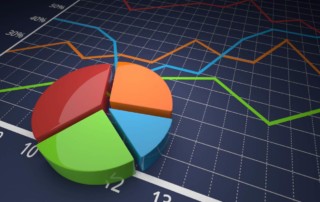Latest Insights
Tell Me Why! Explanations for Ambiguity in Health Decision Making Affect Treatment Choice
Medical treatment decisions are often rife with ambiguity. Exact probabilities for things like side effects or treatment success rates are frequently unknown. But why is this important? Because decision making research has shown that ambiguity can systematically alter the choices people make. We investigated how providing different explanations for the ambiguity in a treatment decision context affected willingness to adopt a treatment with an ambiguously described success rate. When the explanations involved elements that the person was knowledgeable about or could control, people were more interested in an ambiguous treatment.
A Nudge Against Panic Selling: Making Use of the IKEA Effect
A typical behavioral pattern of investors is to reduce stock market exposure after a crash. We suggest a simple nudge based on the IKEA effect and the endowment effect that reduces this problem substantially: In case of a market crash, stockholders who have chosen their own portfolios are more likely to stick with their investment choices.
National Identity and Public Health Behaviors During Covid-19
In a massive international collaboration including more than 200 researchers, we examined the adoption of public health behaviors and support of public policy interventions during the first wave of the Covid-19 pandemic. We found that individuals who identified more strongly with their nation reported greater engagement in public health behaviors and greater support for public health policies. This result was later replicated using aggregated behavioral data.
A Safe Space: Privacy Concerns and Financial Support Tools
Consumers are becoming increasingly concerned about data privacy in their interactions with tools that support financial decision-making. The authors of this TFI research project investigate the impact of privacy concerns on consumers’ use of financial support tools by conducting four experiments using a savings calculator tool, a mortgage calculator tool and an investment advice tool.
Is It Loyalty or Habit?
Marketing theories on loyalty mostly dismiss the idea that consumer's repeated usage of the brand may be a result of a habit, rather than any emotional commitment to the brand. As a result, loyalty marketing often misses one vital component of generating customer stickiness - trying to convert brand choice into a habit. Neuro-imaging suggests that as actions are repeated, the activity in areas of brain involved in decision making actually decreases. This calls for an additional perspective of looking at loyalty as creating a habit loop. It may not involve significant additional resources, but can substantially enhance the effectiveness of the loyalty programs or marketing.
When Red Means “Go”: Color and Cultural Reactance in Risk Preferences
Color can affect judgment and decision making, and its effects may vary across cultures. Research reported in this article shows that cross-cultural color effects on risk preferences are influenced by personal associations of color-gain/loss. Our research finds a cultural reactance effect, a phenomenon in which people who hold culturally incongruent (vs. cultural mainstream) color associations show a stronger risk preference.







